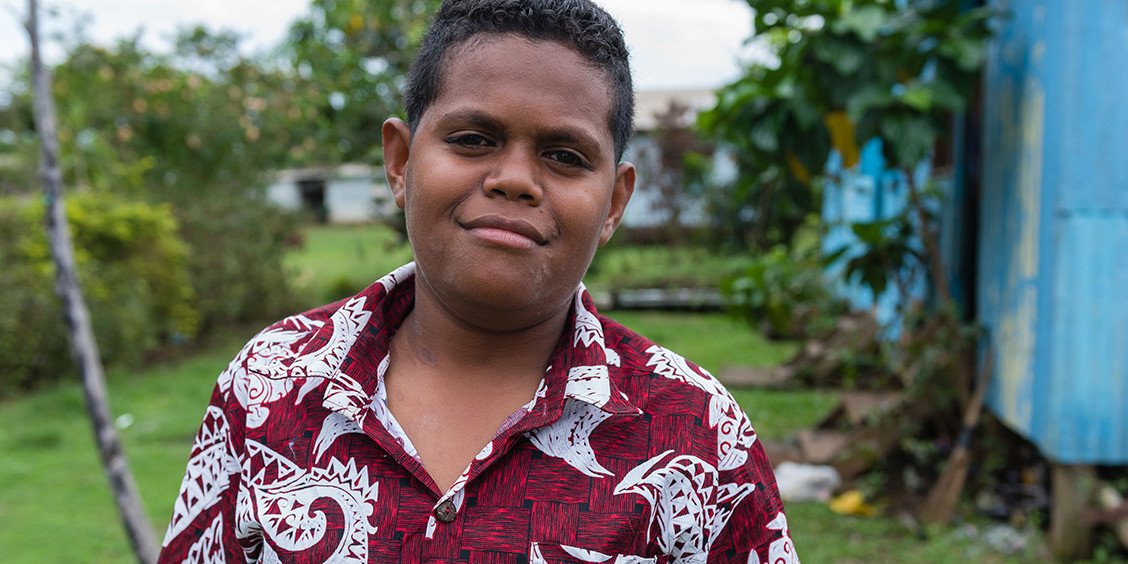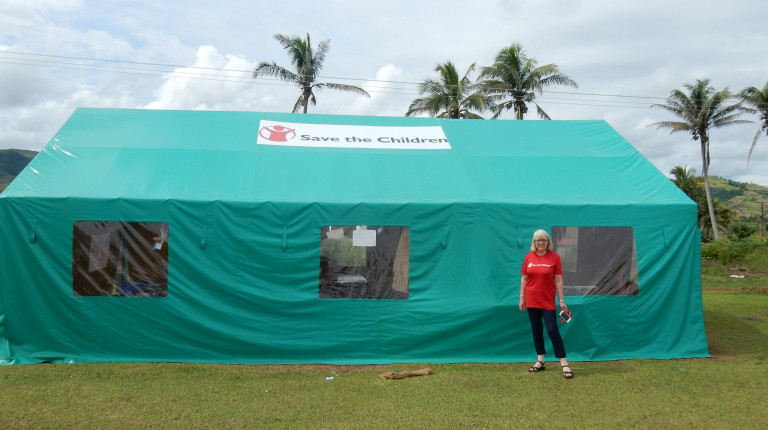Save the Children has launched its biggest project yet in cyclone-wrecked Fiji thanks to the support of our donors.
Chief executive, Heather Hayden, arrived in Fiji to launch a five year project to help 14,000 children and their families prepare for, survive and rebuild again after any future cyclones or other disasters.
I am in Fiji launching a new five-year, $3.5 million project to help Fijian children and their families to prepare for, survive and rebuild again after any future cyclones or other disasters.
In March 2016 you helped us to respond to children’s immediate needs following Cyclone Winston. This devastating cyclone killed 43 people. Extreme weather is only predicted to increase, which is why we are so grateful that your support is enabling us to not only help children when disasters strike, but help them to prepare for disasters so that when they happen again children know what they need to do to survive.
What they want most
I talked to Amena, a 10-year-old boy who hopes to become a teacher in the future. Amena’s village is close to the ocean and, like most other villages, its people were caught out by the surge waves that hit the coastal areas.
“People were terrified as the wind got stronger and stronger. They rushed to the church, the school and other places. My mother was crying. We knew it was going to be windy but we didn’t expect the water. When it came it went into all the houses.”
I heard so many stories of people running from one safe place to another, desperately trying to find shelter from the surging waters and lethal flying debris.
Amena wishes he could be better prepared when another cyclone or other disaster comes.
“What I really want to know is what to do, how to prepare and help others. I don’t want to feel like that again.”
Putting learning into practice
What we learned from Cyclone Winston is just how vulnerable children are in disasters when plans are not in place.
Our new project is taking a child-centred approach to strengthening national and local disaster preparation, working with children to identify safe places to shelter and safe ways to get to them. For more than 10 years Save the Children has worked in vulnerable and informal communities on Viti Levu and Vanua Levu, setting up preschools and training teachers so that the schools can receive government funding.
It is in these same communities that close to 14,000 children will be trained in exactly what to do and where to go in an emergency.
We need to acknowledge that with climate change, extreme weather events like cyclones will continue to strike, and with increasing ferocity. And in Fiji and many other countries, disasters increase poverty, usually by destroying people’s food crops and income sources, leaving them destitute and starving.
With your help the children of Fiji will be taught what to do and learn essential skills for disasters, and be much more prepared for the future.
As part of my visit I was able to see how your support helped children in those days immediately following the cyclone.
Green-coloured Save the Children tents, made locally in Fiji, were in evidence in most school grounds. Save the Children was able to get them into schools immediately after the cyclone, and because of this schools have been able to continue providing an education.
In the village of Naseyani, the impact of the cyclone was devastating for the school. Many of the children also lost their homes, so the gift of school bags and stationery through prepositioned educational kits was a very welcome boost.
Thank you so much! Your support is giving Fijian children the skills they need to cope with disasters.




